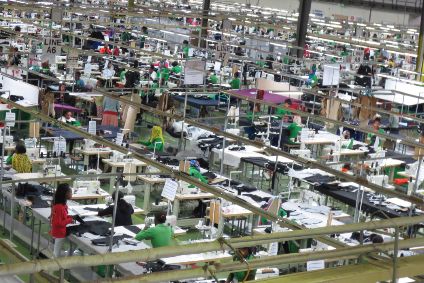The Covid-19 pandemic has highlighted the need for more regionalised, tech-driven manufacturing that is closer to consumers. For less-developed nations, this spells disaster.
Over the past four decades the world’s largest manufacturers have globalised and offshored their operations, mainly to low-cost locations – but a paradigm shift is under way.
Covid-19 has rehashed the dangers of long supply chains, while the rise of automation (or Industry 4.0) over the past ten years has made it cheaper to produce goods in less labour-intensive factories (and therefore be less reliant on low-cost countries).
The result? More and more multinational manufacturers are looking to regionalise their operations and be closer to the consumer – ‘sell where you make’. Subsequently, the world is increasingly breaking up into production mega-regions – Asia, Europe, etc – while ‘reshoring’ or ‘nearshoring’ is growing in popularity, especially if a company’s consumer base is closer to its home country. Shorter supply chains entail less risk and quicker, more reliable delivery to consumers.
According to an April 2020 Thomas survey that interviewed 878 North American industrial sector professionals, manufacturing was the industry that reported the most interest in nearshoring, with 28% of respondents saying they were ‘extremely likely’ to bring more production and sourcing back to North America following the pandemic.
Less-developed nations will lose the most

US Tariffs are shifting - will you react or anticipate?
Don’t let policy changes catch you off guard. Stay proactive with real-time data and expert analysis.
By GlobalDataFor decades, opening factories in low-cost locations was the top priority for manufacturers. The driving logic was economies of scale: the bigger the plant, the cheaper the cost. The aforementioned trends (especially automation) are changing this.
The days of big, cheap factories are numbered, and their loss in the coming decades could have devastating effects on developing countries.
To clarify once more, this does not mean that Western manufacturers will be bringing all their production ‘back home’. Some will, but many are likely to prioritise key markets that neighbour the world’s largest economies, such as Vietnam for China, Mexico for the US, and Romania or Morocco for western Europe.
More specifically, they are likely to prioritise markets that have a strong consumer base of their own, as well as the infrastructure and skills for Industry 4.0.
Changes in the automotive industry are very much a harbinger of things to come, not least because it is arguably the most globalised section of the manufacturing world. One anonymous executive from a global automotive company put it to me clearly: “The more we can automate, the more simple tasks and jobs will disappear from poorer countries.
“Regionalisation will apply this effect. Over the next 20 years, manufacturing will happen closer to consumers. So why would I want to have a factory in Botswana or Algeria where there is not enough purchasing power? The least-developed countries are going to be the biggest losers in this game.”
The economies of many of the world’s poorest nations are hugely dependent on the opening of large-scale plants by foreign companies. However, the days of big, cheap factories are numbered, and their loss in the coming decades could have devastating effects on those countries. Hundreds of thousands of jobs may be lost.
A taste of this crisis will be felt this year and next, since foreign direct investment (FDI) in manufacturing (and beyond) is expected to recover slowest to developing countries, in light of Covid-19.
Across all sectors, about seven out of ten FDI projects announced by US companies since the beginning of the pandemic went to OECD countries, according to fDi Markets database, more than usual. Investors from Europe have behaved similarly.
Investment will spread out again in the coming year or two, but now is a good time for some of the least-developed nations to start preparing foreign investment opportunities beyond the ‘big factory’ of old.
This article first appeared on just-style’s sister site Investment Monitor.




